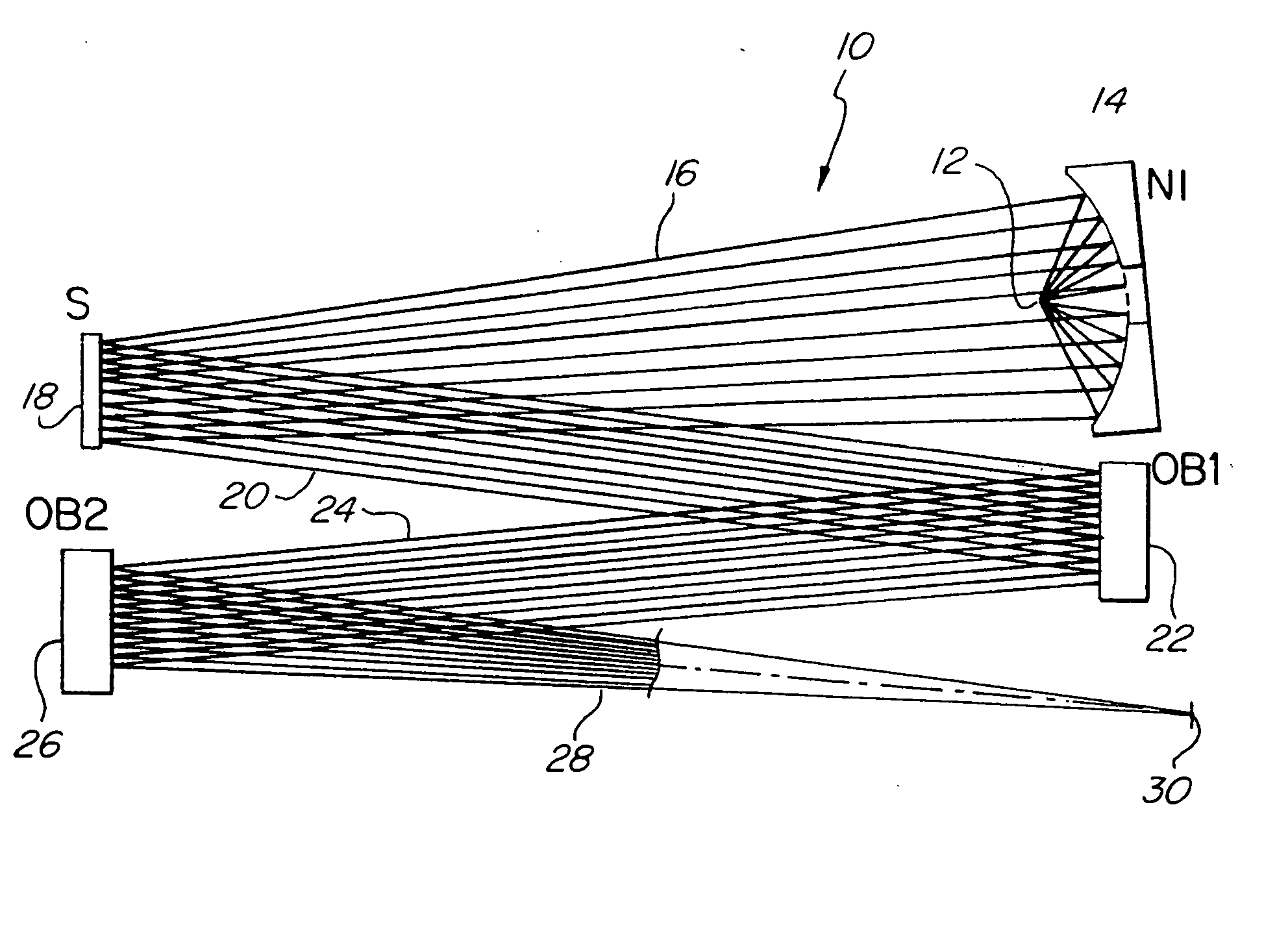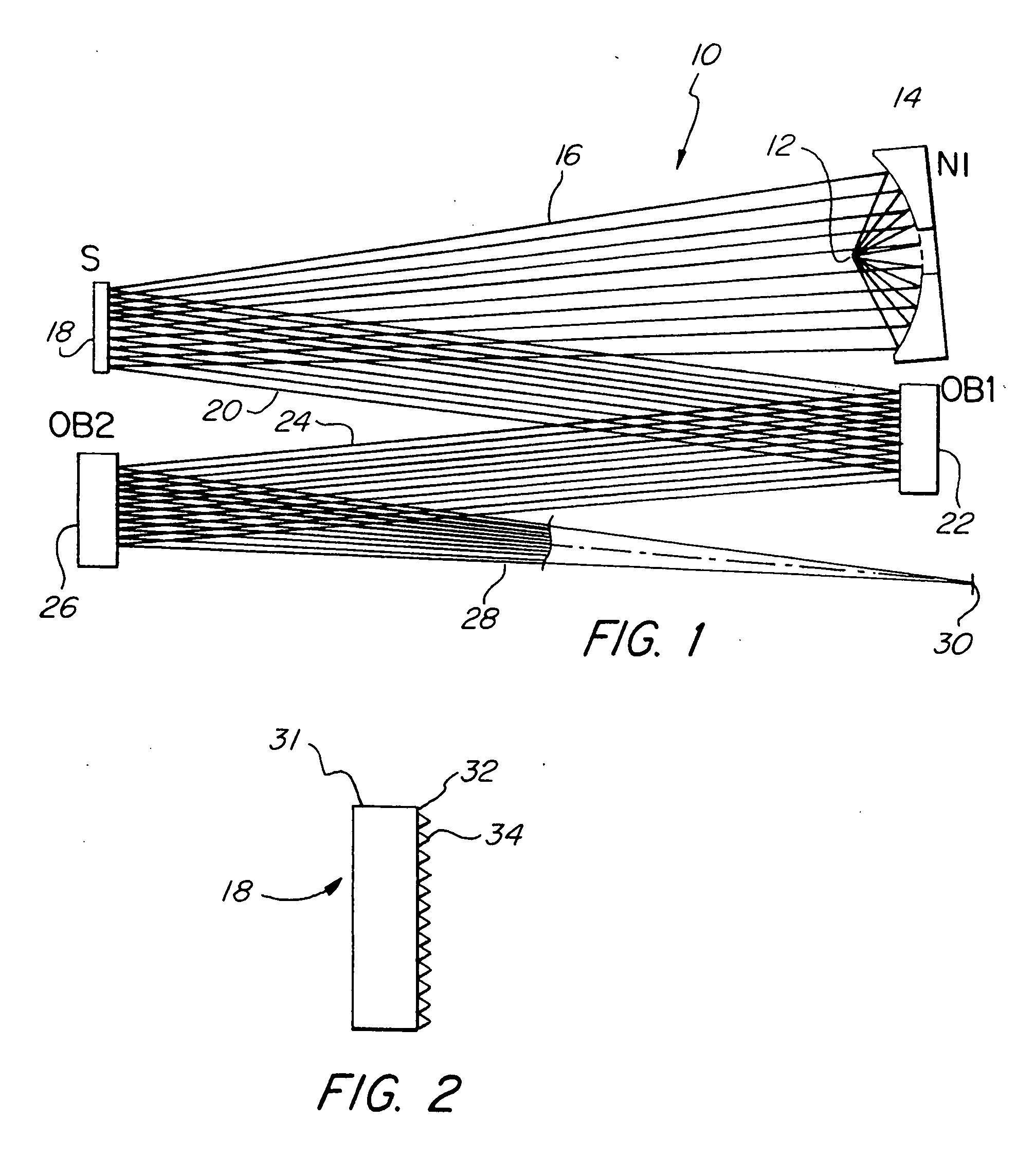EUV condenser with non-imaging optics
- Summary
- Abstract
- Description
- Claims
- Application Information
AI Technical Summary
Benefits of technology
Problems solved by technology
Method used
Image
Examples
Embodiment Construction
FIG. 1 schematically illustrates the illumination system 10 of the present invention utilizing non-imaging optics. An extreme ultrawide, radiation, EUV, source 12, which may be a laser plasma source, a capillary discharge tube or synchrotron, provides electromagnetic radiation in the extreme ultraviolet to a non-imaging optic element 14. The collector or first non-imaging optic element 14 collects the electromagnetic radiation from the source and creates a desired or predetermined radiance distribution in the pupil of the illumination system 10. The radiance distribution may be uniform, annular, quadruple or other known or desired radiance distribution. Various radiance distributions have known desirable properties for imaging different patterns onto a photosensitive substrate. Coatings having a graded thickness profile may be place on the first non-Imaging optic element 14 to improve reflectivity. The electromagnetic radiation reflected from the first non-imaging optic element 14 i...
PUM
| Property | Measurement | Unit |
|---|---|---|
| Length | aaaaa | aaaaa |
| Size | aaaaa | aaaaa |
| Wavelength | aaaaa | aaaaa |
Abstract
Description
Claims
Application Information
 Login to view more
Login to view more - R&D Engineer
- R&D Manager
- IP Professional
- Industry Leading Data Capabilities
- Powerful AI technology
- Patent DNA Extraction
Browse by: Latest US Patents, China's latest patents, Technical Efficacy Thesaurus, Application Domain, Technology Topic.
© 2024 PatSnap. All rights reserved.Legal|Privacy policy|Modern Slavery Act Transparency Statement|Sitemap



